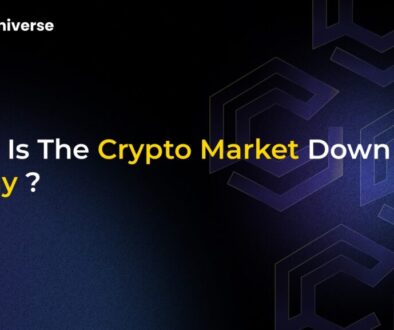Norges Bank’s $40 Billion Loss and Bitcoin Exposure

Norway’s Giant Wealth Fund Stumbles: A $40 Billion Hit
Norges Bank Investment Management (NBIM), the entity managing Norway’s colossal $1.7 trillion sovereign wealth fund – often referred to simply as the Norwegian Oil Fund – faced a significant setback in the first quarter of 2025. The fund reported a substantial loss nearing $40 billion, translating to a negative return of 3.6% for the period.
What triggered this downturn? The primary culprit was the underperformance of US technology stocks, a sector that has often been a major driver of growth but proved volatile in early 2025. This loss highlights the inherent risks even for the world’s largest sovereign wealth fund, heavily diversified but still susceptible to market swings, particularly in influential sectors like tech.
The Unexpected Crypto Connection: $356 Million in Indirect Bitcoin Exposure
While the headlines focused on tech stocks, another intriguing aspect of the fund’s portfolio gained attention: its growing, albeit indirect, exposure to Bitcoin. By the end of 2024, the fund’s indirect stake in the leading cryptocurrency had reached approximately $356 million.
How does a traditionally conservative, index-following fund gain exposure to Bitcoin? Not through direct purchases or Bitcoin ETFs, but strategically through its equity holdings. The fund holds shares in several publicly traded companies that have significant Bitcoin reserves on their balance sheets or are deeply involved in the crypto ecosystem. Key holdings include:
- MicroStrategy: A major proponent of holding Bitcoin as a treasury reserve asset. Norges Bank holds a significant stake (around 0.72%) in the company, translating to an indirect exposure of over 3,200 BTC through this investment alone.
- Coinbase: A leading cryptocurrency exchange platform.
- MARA Digital Holdings & Riot Platforms: Prominent Bitcoin mining companies.
Through these equity investments, the fund’s indirect Bitcoin holdings reportedly grew by a staggering 153%, reaching approximately 3,821 BTC by the close of 2024. This significant increase underscores how traditional finance is becoming increasingly intertwined with the digital asset space, even if indirectly.
Navigating the Risks: Sell Pressure and Market Uncertainty
This indirect exposure isn’t without its risks. While potentially offering diversification or capturing upside from the crypto market, it also links the fund’s performance more closely to Bitcoin’s notorious volatility.
Several factors contribute to the potential risks:
- Market Volatility: Bitcoin’s price can fluctuate wildly, impacting the value of companies holding large BTC reserves like MicroStrategy.
- Sell Pressure: In times of global economic stress or liquidity crunches, assets perceived as risky, including Bitcoin and crypto-related stocks, could face significant sell-offs. The sheer volume of tokens in circulation requires constant buying pressure to maintain price levels.
- Correlation: During market downturns, even assets considered potential hedges can correlate with broader market movements, reducing diversification benefits.
Norges Bank, known for its meticulous risk management, must carefully weigh the potential rewards against these inherent risks, especially given the fund’s primary mandate of safeguarding and growing Norway’s petroleum wealth for future generations.
Sovereign Funds and Bitcoin: A Tale of Different Strategies
Norges Bank’s cautious, indirect approach stands in contrast to the strategies being adopted by some other sovereign wealth funds (SWFs).
A notable example is Abu Dhabi, whose sovereign investment arms have reportedly made significant direct investments into Bitcoin Exchange Traded Funds (ETFs). One reported stake reached $437 million, signalling a clear belief among some state-backed investors in Bitcoin’s potential role as a store of value or a hedge against traditional market instability.
This divergence highlights a broader debate within institutional finance:
- Is Bitcoin a speculative gamble or a legitimate asset class?
- Can it serve as a portfolio diversifier or a hedge against inflation and currency devaluation?
- What is the appropriate way for large, conservative institutions like SWFs to gain exposure – directly via ETFs or coins, or indirectly via equities?
Norges Bank, being predominantly index-driven with a heavy focus on global equities and bonds (and minimal gold holdings), seems to be sticking to its traditional framework, gaining crypto exposure only as a byproduct of its stock investments rather than a targeted allocation.
What’s Next for Norges Bank and Crypto?
Despite the Q1 2025 losses, Norges Bank had a profitable run in 2024. However, ongoing global uncertainties, including trade tensions and potential economic slowdowns, keep risk management at the forefront.
Given its structure and mandate, a direct investment in a Bitcoin ETF seems unlikely for Norges Bank in the near future. The fund’s leadership has maintained a cautious stance. However, the growing indirect exposure via companies like MicroStrategy is undeniable.
Could the fund strategically increase its holdings in Bitcoin-related companies? It’s a possibility. As the lines between traditional finance and digital assets continue to blur, even conservative giants like Norges Bank may find strategic value in companies pioneering or heavily invested in the crypto space, viewing them through the lens of technology and innovation rather than pure cryptocurrency speculation.
The $40 billion Q1 loss serves as a stark reminder of market volatility. While driven by tech stocks, the fund’s simultaneous, significant indirect Bitcoin exposure adds another layer of complexity and risk – and potentially, opportunity – that Norges Bank will need to carefully navigate in the years ahead.


